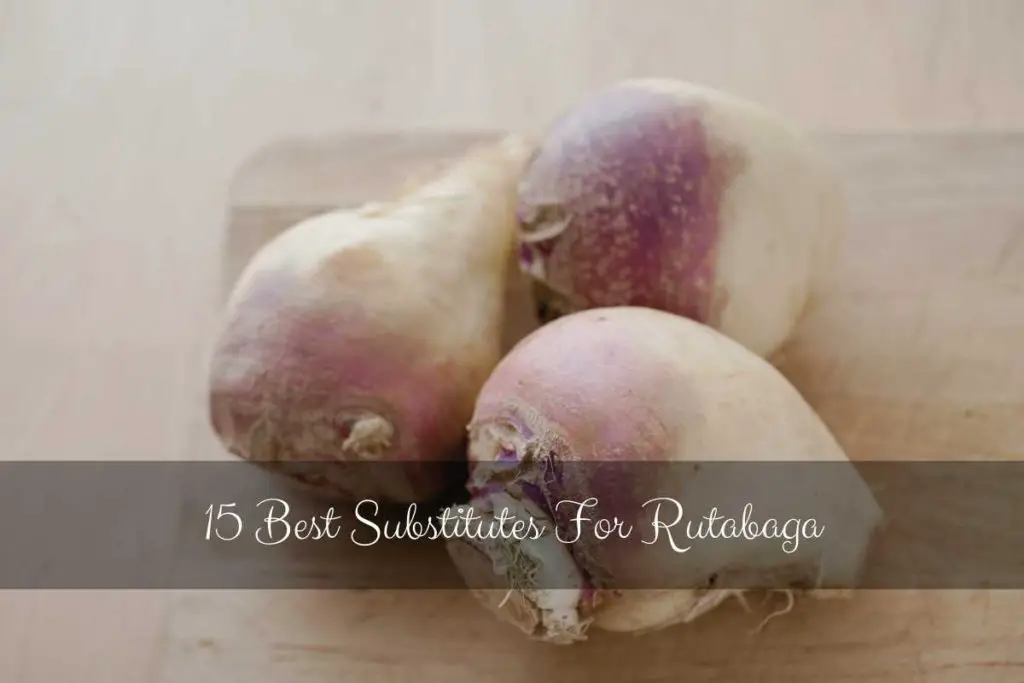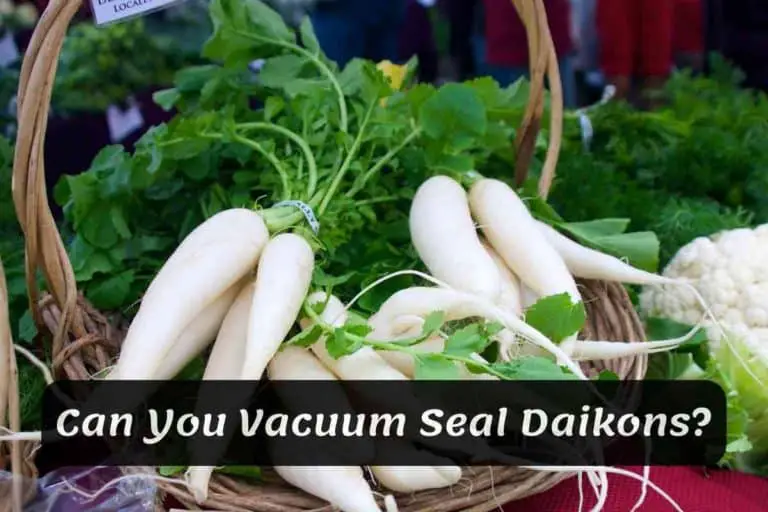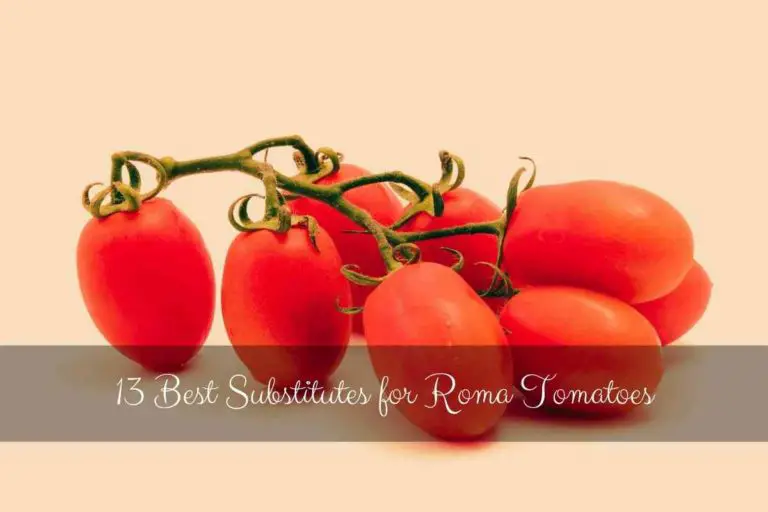15 Best Substitutes For Rutabaga
Rutabaga, or swede as it’s known in some places, is one of those vegetables that people either love or hate. Rutabaga is a root vegetable usually used as a starch or a side dish. It has a solid, sweet taste that is not appealing to most people.
But if you’re a lover and find yourself out of rutabagas, this guide will tell you the best substitutes for rutabagas to use in your favorite dishes.

15 Best Substitutes For Rutabaga
Here is the list of the 15 best substitutes for rutabaga; you can use them in any recipe that calls for rutabaga.
1. Salsify
Salsify is a root vegetable that looks and tastes similar to parsnip. Sometimes, it’s even referred to as the “oyster plant” because of its shape. Salsify can be eaten raw in salads, cooked in soups or stews, or roasted like potatoes.
Salsify is one of those vegetables that doesn’t get much love regarding popularity rankings—but it should! It’s a good source of vitamin C, potassium, calcium, and fiber (which helps keep your digestive system healthy).
2. Potato
Potatoes are an excellent substitute when you want to use rutabaga in a recipe but don’t have any on hand. They are also rooted vegetables containing many of the same nutrients as rutabaga. Potatoes provide more vitamin C than rutabagas do—they are an excellent source of this nutrient. They also have plenty of potassium and vitamin B6.
3. Turnip
Turnips are a good substitute for rutabaga because they contain many of the same nutrients, including vitamin C and fiber. They also have a good amount of vitamin B6 and potassium, which can help lower your risk for heart disease.
Turnip greens don’t need to be cooked if you’re using turnips as an alternative to rutabagas in recipes; they taste great raw or cooked as well!
4. Jicama
Jicama is a root vegetable with a texture similar to that of artichoke hearts. It’s typically eaten raw, but you can also roast the jicama and add it to salads or sides (the crunchiness will make your side dish look like it came from a restaurant).
Jicama is low in calories, high in fiber, and contains good vitamin C, potassium, and folate levels. The downside? Like rutabaga, jicamas can be tough on the stomach if you overeat at once—but if you stick with smaller portions, this shouldn’t be an issue!
5. Kohlrabi
If you’re a fan of rutabaga but want to try something new, kohlrabi is a great alternative. Kohlrabi is part of the cabbage family and looks like a cauliflower that someone forgot to finish growing. It has a mild flavor and can be used in place of other root vegetables like potatoes or carrots in many recipes, especially those that call for mashed potatoes or potato salad.
Kohlrabi contains more vitamin C than citrus fruits and provides more potassium than bananas! In addition, kohlrabi contains vitamin B6, which helps with brain function and energy levels—making it one wise vegetable!
6. Radish
Radish is an edible root vegetable of the Brassicaceae family that was domesticated in Europe in pre-Roman times. Radishes are grown and consumed worldwide, mostly eaten raw as a salad vegetable. They vary in color, including red, white, and yellow, and are sometimes spicier than the average carrot.
Radishes are an excellent substitute for rutabaga. They are a delicious root vegetable that is commonly eaten raw in salads. They’re also a good source of vitamin C (183% of your daily value) and fiber (2 grams per cup), so you can count on these root vegetables being nutritious and tasty.
7. Parsnip
Parsnips are a root vegetable similar to carrots in appearance but have a much sweeter and nuttier taste. Native to Europe and Asia, parsnips were eaten by the Ancient Romans. They’re best when roasted or mashed with other root vegetables like potatoes and carrots.
Parsnips are also great substitutes for rutabaga in soups and stews because they have a similar texture and flavor profile. If you enjoy cooking with rutabagas, try using parsnip instead! It’s easy to substitute one vegetable for another while keeping your meal delicious and nutritious!
8. Beetroot
Beetroot is another root vegetable that has many similar qualities to rutabaga. It’s also a good source of iron and vitamin C, making it a great addition to your diet if you’re looking for ways to increase your daily nutrient intake. It is often used in salads or as a garnish. The beetroot is a good source of vitamins and minerals, including iron and magnesium.
9. Celeriac
Celeriac is another root vegetable that’s often used in place of rutabaga. Like the rutabaga, celeriac has a mild flavor that’s perfect for soups and stews. It also contains vitamin C, potassium, manganese, and fiber.
While slightly less sweet than the rutabaga (though still sweeter than most other vegetables), celeriac is excellent for those who want to substitute a starchy vegetable with a healthy one. If you’re looking to cut down your sugar intake or add more variety to your diet without sacrificing taste or satisfaction, this may be the way to go!
10. Yams & Sweet Potatoes
Yams and sweet potatoes are two different varieties of the same plant, but they have very other culinary uses. Yams are native to Africa and Asia, while sweet potatoes are South American natives.
Because of this difference in origin, yams have a more starchy texture and sweeter flavor than sweet potatoes (which tend to be drier). Yams are also more expensive than sweet potatoes: you’ll pay double or triple the price for similar-sized tubers.
11. Onion and Leeks
Onion and leeks are an excellent substitute for rutabaga. They have a slightly sweeter flavor, but they’re still able to lend many of the same nutrients and taste to any dish. Onion is an allium in many colors: red, yellow, white, purple, and brown.
All these varieties pack different levels of heat and sweetness—so choose according to what you like best! Leeks are also onion family members; however, they’re much milder than their bulbous cousin.
12. Daikon
Daikon is a white radish often used in Korean and Japanese cuisine. The root vegetable has a peppery scent and flavor, similar to horseradish. Daikon can be shredded or julienned into salads or stir-fries, but it’s also delicious pickled and served as an accompaniment to sushi.
Daikon is high in fiber and provides about 2 grams per half-cup serving (about 100 grams). It’s also rich in vitamin C (40% DV per half cup) and contains smaller amounts of vitamins B6 and K1 (about 15% DV each).
If you’re looking for another way to eat your daikon instead of rutabaga this fall season, try one of these recipes:
13. Jicama
Jicama is a root vegetable that is crunchy, sweet, and nutty in flavor. It has a very low-calorie count, meaning you can eat it in moderation without guilt. Jicama contains fiber, vitamin C and B-6. This makes jicamas an excellent choice for those looking to lose weight because they are filling while being low in calories.
Jicamas also have high levels of resistant starch, which can help you feel full longer after eating them, making them an excellent food choice if you’re trying to lose weight or just maintain your current weight (as opposed to gaining).
Jicamas are also known as Mexican turnips because of their large size compared to other turnips (like rutabagas). They grow best in warm climates but can be found at many Asian grocery stores or farmers’ markets year-round if purchased from local growers who produce them indoors during winter months here in the U.S.
14. Cabbage
Cabbages are also a good substitute for rutabaga. They are root vegetable that is usually eaten raw in salads. This is a vegetable that is often used in salads and coleslaws. It is a leafy green vegetable high in Vitamin C. Cabbage can be eaten raw or cooked.
15. Broccoli Stems
Broccoli stems are a great source of vitamin C and fiber. And they’re versatile too: they can be eaten raw or cooked, steamed, boiled, or stir-fried. To prepare broccoli stems for cooking, snap off the woody part at the bottom and trim any rough edges on top with a knife. Peel away any tough skin before chopping it into pieces or slicing it into thin strips.
The texture of broccoli stems is quite similar to celery in terms of crunchiness—they’re firm enough to slice thinly but soft enough that you don’t need to peel them first if you don’t want to get your hands dirty!
Best Substitutes For Rutabaga – FAQs
What vegetables are in the rutabaga family?
Rutabagas are a type of vegetable in the same family as turnips. They are usually larger than turnips and have yellowish-brown skin. The flesh of rutabaga is generally white or yellow.
Can I substitute turnip for rutabaga?
A rutabaga is a root vegetable that is similar to a turnip. It is often used as a substitution for a turnip in recipes. The main difference between a rutabaga and a turnip is that the rutabaga has white skin, while a turnip does not. Rutabaga has a more mellow flavor than a turnip. If you can’t find rutabaga, use a turnip instead. What is a beet?
Does rutabaga taste like cauliflower?
Rutabaga is a root vegetable that is closely related to cauliflower. It has a milder flavor than cauliflower but is more nutritious. Rutabaga is used as a substitute for cabbage in many dishes, particularly in the United States. It is often used in the preparation of soups and stews.
Conclusion
We hope you’ve enjoyed our “15 Best Substitutes For Rutabaga” list and found some new ways to substitute for rutabaga.
There are many substitutes for rutabaga, depending on what you are looking for. If you need a starchy vegetable, potatoes are the best option. If you are looking for a sweeter vegetable, carrots or parsnips are good choices.
Turnips or celery roots are good options if you need something low in carbs. Lastly, if you want a vegetable with a similar texture to rutabaga, but a different flavor, try kohlrabi.



![Can You Vacuum Seal Tomatoes? [And How To Do That]](https://orbitkitchen.com/wp-content/uploads/2022/05/Can-You-Vacuum-Seal-Tomatoes-768x512.jpg)
![Can You Vacuum Seal Apricots [Explained!]](https://orbitkitchen.com/wp-content/uploads/2022/09/Can-You-Vacuum-Seal-Apricots-768x512.jpg)
![Can You Vacuum Seal Jicama? [Here’s the Answer]](https://orbitkitchen.com/wp-content/uploads/2022/05/Can-You-Vacuum-Seal-Jicama-768x512.jpg)

